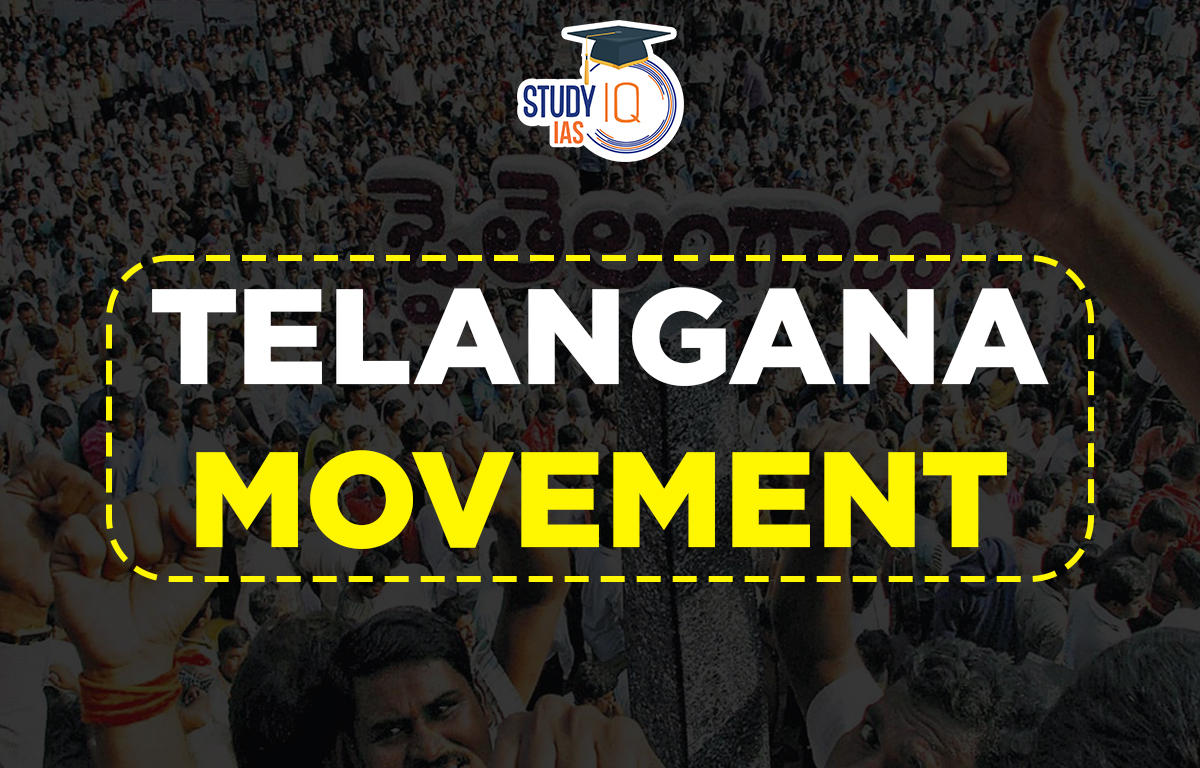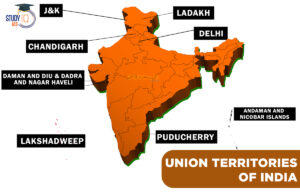Table of Contents
Telangana Movement
The Telangana movement (1946–1951) was an armed uprising of peasants against oppressive landlordism that was supported by the autocratic authority of the Nizam of Hyderabad. It was led by the Communist Party of India. Due to its significance for the future of the communist movement in India and the way it brought attention to the plight of the Indian peasants, it was a turning point in Indian history. Candidate Preparing for UPSC has all the details related to Telangana Movement for UPSC Exam Preparation.
Read about: Quit India Movement
Telangana Movement History
The Telangana Movement (1948–1951) was an armed uprising of peasants against oppressive landlordism that was supported by the autocratic authority of the Nizam of Hyderabad. It was led by the Communist Party of India.
With the start of the Second World War, the hardship of the peasants grew worse as they came under more and more oppressive taxes and levies and was made to do “vetty” labour (forced labour). The poorest peasant strata were most negatively impacted because many of them were unable to handle the rising cost of exactions and lost their land to villagers’ moneylenders.
The Communists organized men, women, and children from various unsatisfied villages into armed guerilla squads to combat rapacious landowners and the Nizam’s armed battalions, known as “razakars,” who were increasingly used to put down the movement. Around 3000 villages in the area created parallel governments.
The armed fight in Telangana was motivated by P.C. Joshi, the Communist Party of India’s general secretary at the time. He made arrangements for the struggling peasants to receive weapons and ammo. Many military officials helped him in his Endeavour by providing weapons at no cost and setting up their shipping. This unique compilation of images, which was shot by a party photographer, vividly and occasionally humorously documents the many facets of Telangana’s residents’ lives during those turbulent times.
Read about: Non-Cooperation Movement
Telangana Movement Causes
Former Hyderabad state under the Nizam had an aristocratic system of government. The middlemen who gathered the land taxes in the jagir region were the jagirdar’s agents. The jagirdar and his servants oppressed the population heavily. They were allowed to demand any number of taxes from the actual cultivators. This expropriation situation persisted until the jagirdari system was ended in 1949.
On the other hand, the khalsa land system, also known as the raiyatwari system, was exploitative, albeit to a slightly lower extent. The Deshmukhs and Deshpandes served as middlemen in the khalsa communities.
The exploitation of the big peasants was yet another factor in the farmer uprising in Telangana. According to D.N. Dhanagare, the Jagirdars and the Deshmukhs owned thousands of acres of property. These large peasant families and their leaders were referred to as Durra or Dora.
Similar to the Hali slave system in south Gujarat, slavery was practised throughout the entire former kingdom of Nizam. The name of this mechanism was Bhagela. The majority of the clans that made up the Bhagela were dependant on the master because of debt. The tenant who had borrowed money from the landlord was required to work for him until the obligation was repaid under the Bhagela system. The Bhagela was typically expected to serve the landlord for generations.
Notable castes that have historically served as merchants and moneylenders include the Reddis and Kammars. They had a tremendous deal of sway over rural areas. They sought to undermine the Brahmins’ hegemony over agriculture in the kingdom.
The Telangana area was underdeveloped economically. Agriculture’s development was dependent on irrigation infrastructure. Without irrigation facilities, it would be very difficult to harvest the market crops. However, Nizam recognised the need for irrigation and gave the villagers in the villages of Khalsa and Jagir access to it. But the large farmers primarily controlled these facilities.
The erstwhile Hyderabad state was not a newcomer to land alienation. The frequency of property eviction rose between 1910 and 1940. The amount of land owned by urban non-cultivators—mostly Brahmins, Marwaris, and Muslims—rose, while tribal peasants was demoted to the position of marginal farmers and landless labourers.
Read about: Khilafat Movement
Telangana Movement After Effect
In a “police operation” on September 13, 1948, the Indian Army entered the state in an effort to quell the unrest in Hyderabad. The cops, the razakar squads, and the Nizam all gave up within a week. The military government issued the Jagir Abolition Regulation (August 1949) in an attempt to win over peasant support and established an Agrarian Enquiry Committee to make recommendations for comprehensive land reform legislation.
A discussion started at this point within the CPI. Some groups believed that putting down the weapons was crucial. Some groups were skeptical because they believed that giving up the weapons might result in losses and be perceived as a betrayal of the populace.
However, by the end of 1950, there were only a few guerilla groups left, there was little coordination among village republics, the people had suffered greatly from the military repression, including a significant loss of life, and the movement had become weaker. The Congress government began to show some conciliation towards the CPI in early 1951, and on October 21, 1951, the CPI formally proclaimed the conflict to be over.
Read about: Justice Movement
Telengana Movement UPSC
The endeavours of socialist and communist parties during the early decades of the communist movement have culminated in the Telengana movement. A break from historically more moderate reformist groups within the peasantry, the tireless efforts organising and mobilising the peasantry against grave injustices signified.
Despite the intense debate surrounding the Telengana movement’s exact significance and value, it cannot be denied that the movement played a significant role in bringing the peasantry issue to the forefront of the communist movement, in actively mobilising people against caste injustices, and in fundamentally redefining the necessity for a strong organisational structure, which was a key factor in the movement’s expansion.
Read More: Young Bengal Movement


 Indian Sex Ratio 2024 State-wise, NFHS-5...
Indian Sex Ratio 2024 State-wise, NFHS-5...
 Union Territories of India with Capital ...
Union Territories of India with Capital ...
 Rowlatt Act 1919, Meaning, Provisions, R...
Rowlatt Act 1919, Meaning, Provisions, R...

















